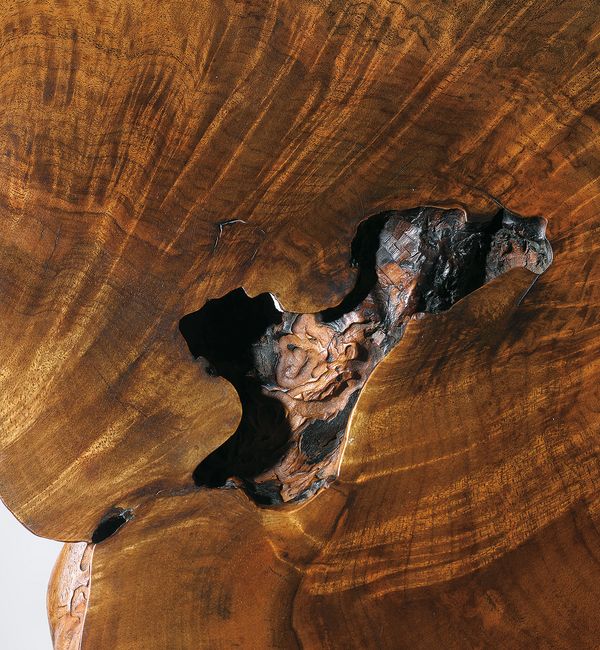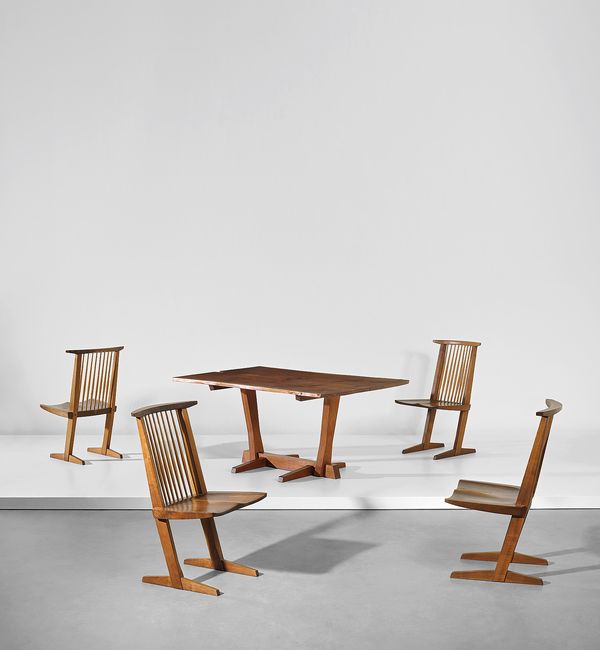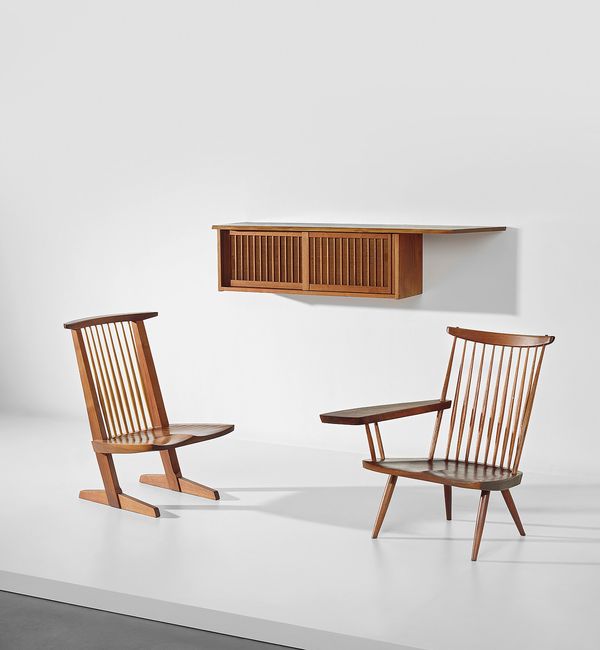Detail from George Nakashima 'Minguren I' coffee table, 1976
In the summer of 1976, a lively debate took place in the 'Letters' column of the journal Craft Horizons regarding George Nakashima's 'Conoid' chair. Responding to a 'Conoid' chair that had been depicted in the February 1976 issue as part of an exhibition of contemporary furniture at the Cincinnati Art Museum, Paul Killinger of Boulder, Colorado expressed his "profound shock and even despair" regarding the chair’s cantilevered construction, which he described as "structurally terrifying." Mr. Killinger could not conceive how the joint of the seat and vertical back rails, with no front leg support, would hold up under any use.
Nakashima published a letter of response in the next issue of Craft Horizons. He noted that his studio had already been producing this design for fourteen years and to his knowledge, "the particular joint that Killinger is so 'terrified' about has never failed."
The brilliant engineering that underpinned [Nakashima's] highly original designs is often overlooked.
George Nakashima Set of four 'Conoid' dining chairs and dining table, 1976
Indeed, decades later, the 'Conoid' chair has endured and gone on to assume its rightful place in the canon of twentieth-century design. Killinger clearly did not understand that George Nakashima was an MIT-trained architect, thoroughly-schooled in engineering and the structural properties of materials. Though Nakashima, as a leader of the American studio furniture movement, is revered for elevating the inherent beauty of natural wood in his furniture, the brilliant engineering that underpinned his highly original designs is often overlooked. Nakashima also learned sophisticated joinery techniques through apprenticing with a Japanese carpenter. "As an architect, I appreciate theory," he wrote in Craft Horizons, "but the empirical test of time is the truest test of a product; this chair has passed this test." Nakashima folded all of these experiences into the design of the 'Conoid' line of furniture, which was inspired by the curved vault of the Conoid studio he had constructed on his compound in New Hope, Pennsylvania.
Perhaps Leticia Kent, who commissioned the group of six Nakashima lots from our Important Design sale and acquired her set of 'Conoid' chairs the same year as the letters between Nakashima and Killinger appeared in Craft Horizons, was drawn to the architectural aspect of Nakashima's furniture. Ms. Kent studied architecture at the Pratt Institute and The Cooper Union in New York and worked for several architects including Giorgio Cavaglieri.
From left: George Nakashima 'Conoid' lounge chair, circa 1980; Wall-mounted cabinet, 1967; Single-armed lounge chair, 1961
However, in the late 1960s, Kent took up a second career as a journalist, contributing to the Village Voice, the New York Times, and Vogue, among other publications. Her subjects ranged from pollution to urban design and show business. An active member of her community, she was also a founding member of the Greenwich Village Society for Historic Preservation.
Beyond architecture, Ms. Kent and Nakashima shared an interest in India and Hinduism. In a 1968 letter in which Nakashima responded to clippings from the Village Voice that Kent had sent him, he relayed his experiences in India, where he was a member of Shri Aurobindo Ashram in Pondicherry and even became a Hindu Monk.
It is a deeply felt letter and demonstrates the close friendships and bonds that formed between Nakashima and his clients.


